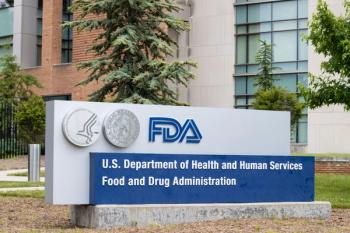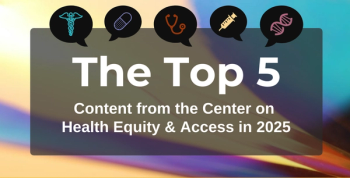
Report Commissioned by COA Explores "Murky" World of Pharmacy DIR Fees
A white paper commissioned by the Community Oncology Alliance (COA) delved into the practice of “direct and indirect remuneration” fees administered by pharmacy benefit managers and how they could drive up drug prices for Medicare Part D beneficiaries and taxpayers.
Updated to include a rebuttal from the Pharmaceutical Care Management Association.
A white paper commissioned by the Community Oncology Alliance (COA) delved into the practice of “direct and indirect remuneration” (DIR) fees administered by pharmacy benefit managers (PBMs) and how they could drive up drug prices for Medicare Part D beneficiaries and taxpayers.
However well-intentioned the original idea may have been, the paper contends that “over the last year or so, DIR fees have been twisted by PBMs into an abusive and overly-broad ‘backdoor’ vehicle for clawing back additional monies and increasing their own profits.”
According to the report, PBMs now charge “performance-based” DIR fees to pharmacies based on inappropriate quality metrics. These “murky and opaque” retroactive charges create a lack of transparency as the pharmacies cannot account for the net price of a drug claim until after the PBM takes back the DIR fee. This obfuscation of prices is especially concerning for community oncology practices, as the high cost of the specialty cancer drugs they dispense makes these medications an alluring target for PBMs administering fees as a percentage of gross reimbursement.
“The dirty little secret is that PBMs—once seen as the key to controlling drug costs—are actually driving them up for everyone,” said Ted Okon, executive director of COA. “As we begin to focus on the cost of drugs, part of the conversation must be DIR Fees, another example of a made-up, contrived tool used by PBMs to feed profits at the expense of patients, the Medicare program, and pharmacy providers.”
The paper alleges that the PBMs often use different terms for DIR fees so they do not have to report them to CMS, meaning that the cost is passed on to Medicare and its beneficiaries. Inflating the cost of a drug at the point of sale pushes patients into the Part D “donut hole” coverage gap prematurely, as their expenditures are based on the higher initial cost paid, not the actual cost after the DIR fee is collected.
“DIR fees charged by PBMs harm patient pocketbooks and care,” said Jeff Vacirca, MD, president of COA and a practicing medical oncologist. He added that the high copay costs experienced by those in the donut hole “force too many patients to cut back or even abandon their treatment, jeopardizing their care and threatening their lives.”
The paper noted that patients are likely unaware of why they are rushed into the donut hole, as they are not told about the DIR fees recouped from pharmacies and their copays are not adjusted to account for these retroactive fees. The higher costs incurred by Medicare also have ramifications for taxpayers.
CMS had proposed draft guidance that would have restricted DIR fees but failed to implement it, which the paper blamed on lobbying from PBMs. In September 2016, lawmakers introduced bills in both the House and the Senate that would have prohibited the use of retroactive DIR fees, but the bills expired with the end of the 114th Congress. The report was optimistic that similar bills would be reintroduced in the current session and CMS would adopt firm guidance on the practice, with the encouragement of a new president who has railed against drug pricing.
“President Trump has vowed to tackle prescription drug costs—a good place to start is looking at what the PBMs are doing to fuel those costs,” said Okon.
The Pharmaceutical Care Management Association, which represents America's PBMs, emphatically denied the report's findings in
"Today's attack on Medicare Part D plans' tools to reduce drug costs is a thinly veiled attempt to protect certain oncologists' profits at the expense of patients and the Medicare program itself," the statement read. "It's no secret they prefer Medicare Part B's fee-for-service approach, which according to MedPAC, gives providers 'incentives for use of higher priced drugs when lower priced alternatives exist.'"
Newsletter
Stay ahead of policy, cost, and value—subscribe to AJMC for expert insights at the intersection of clinical care and health economics.








































